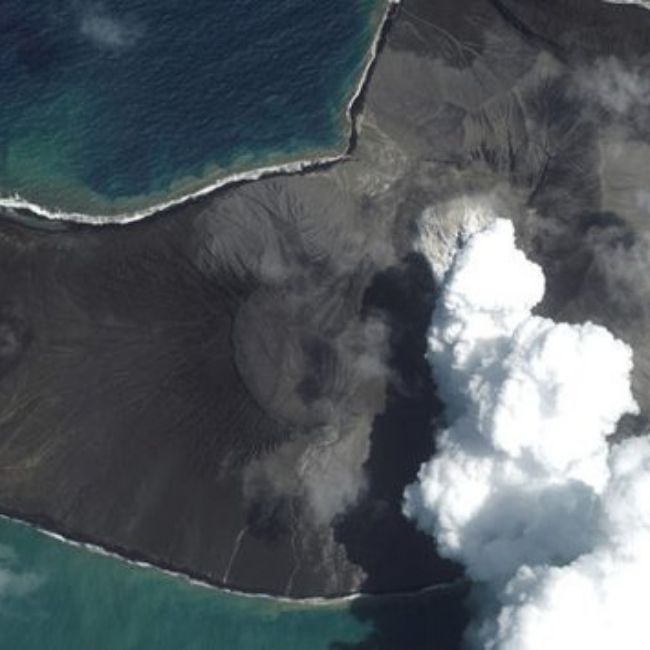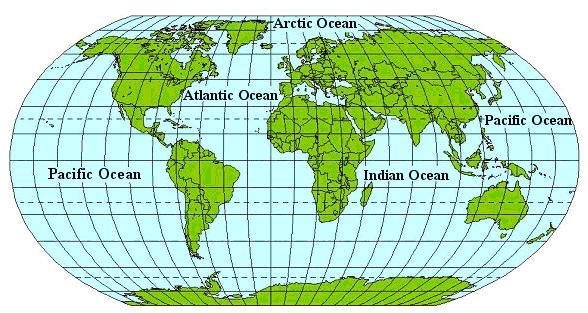
Tell us what is the Pacific ‘Ring of Fire’
Recommended for Preparatory Grades
A question leads the way
On 16th January Tonga Island was rocked by a Tsunami. As rescue operations are underway, a very important question comes to our mind. Remember kids, it’s always a question that drives us. Always a question! Moreover, what’s really curious is that Tonga Island lies along the Pacific ‘Ring of Fire’.
Does that sound scary? We mean “ocean+fire=ring”? The equation doesn’t help at all. So, we’d like to go back to the basics. Now we head to our Marine library and quench our thirst for knowledge.
Let’s look from above
Which are four important oceans on our planet?
Look closely at the globe (see the image below), we have basically four important oceanic regions – Arctic, Atlantic, Indian and Pacific.
The oceans are mostly coloured as “blue”. Now, let’s focus on the region of the Pacific Ocean. Remember this region has the majority of the active volcanoes and almost 9 out of 10 earthquakes in the world happen here. So, does no one live here? Of course not, the Pacific Ocean is home to a lot of marine animals, just to name a few – dolphins, whales, turtles amongst many others.
Now let’s look closer
The area of what is called the “Pacific Ring of Fire” is a stretch of almost 40000 km. Have a look at the image below, start from New Zealand and move in a clockwise direction all the way to the west coast of North and South America. What’s really interesting is that along the way the area is covered by slabs of land which is massively irregular. These slabs of land are extremely sensitive to movements. All this makes the area sensitive to volcanic activities and tsunamis.
Where’s does this lead us now?
Well, now we have a little bit of idea around the Pacific Ring of Fire. We also know that it is called “Fire” because the entire belt has a lot of volcanic eruptions. That’s also the reason why the whole area is a “No Fly Zone”.
We hope you enjoyed the article, do write to us or drop a comment. We’d love to hear from our readers.
Stay safe and happy learning!
At Curious Times we absolutely love what we do and strive each day to provide our little readers with the best experience and news. Curious Times Weekly, The Curious Magazine, and My Expressions are just a few ways for us to reach out to our readers with exciting and interesting content.
Children from schools all over the world are finding value and loving our content! We always want to be better each day and continue to seek your valuable feedback. That helps us to serve you better. Don’t hesitate to drop us a message or just say “Hi”, at hello@curioustimes.in. We love to hear from our little munchkins. You could also connect with us via WhatsApp, Instagram, Facebook Youtube, Twitter, LinkedIn.
0 (Please login to give a Curious Clap to your friend.)


